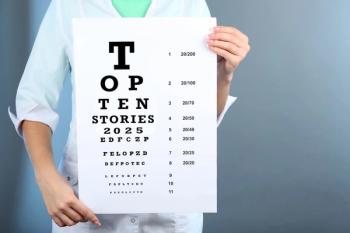
Throwback Series: Learning when to intervene surgically in glaucoma
Inder Paul Singh, MD, shares a formative experience in which a patient’s vision loss—and their unexpected gesture of comfort—shaped his approach to high-risk glaucoma care.
In celebration of Ophthalmology Times’ 50th anniversary, leaders in ophthalmology revisit a memorable “throwback” case from earlier in their careers. In this special series, they reflect on how evolving knowledge, techniques, and technologies have transformed the way such cases are managed today. Join us as we look back at pivotal moments in their professional journeys — and explore how far the field has come.
This episode focuses on the case of a monocular patient who lost his remaining vision. The ophthalmologist—Inder Paul Singh, MD—highlights how today’s advanced surgical options and earlier intervention could change everything. The experience also brought an unexpected source of comfort—from the patient himself. The moment became a lasting reminder of empathy, resilience, and the preciousness of sight.
Singh, who is president of The Eye Centers of Racine and Kenosha, in Wisconsin, reflects on this pivotal experience that shaped his approach to glaucoma management and surgical intervention. At the time, approximately 15–20 years ago, Singh notes that the available surgical and medical options were more limited than today. Minimally invasive glaucoma surgeries (MIGS), subconjunctival bypass procedures, and advanced laser therapies were either not available or in early stages. He initially opted for medical management, “kind of giving more drops and more drops and more drops,” while hesitating to pursue surgery due to concern about risks in a monocular patient. By the next visit, however, the patient’s vision had deteriorated to essentially light perception, and noncompliance with drops compounded the decline.
Singh emphasizes the dual nature of surgical risk: “Even though yes, there are risks with surgery, the risk of not doing surgery also is there, and you just don't know in some of these patients as well.” Reflecting on this case, he highlights how advancements in glaucoma surgery allow for earlier intervention and safer management of high-risk patients. The availability of MIGS and other less-invasive procedures can reduce the burden of topical therapy while potentially slowing disease progression and preserving quality of life. “It can allow us to actually feel comfortable doing surgery early on and reducing the drop burden for these patients because we do know that patients are not compliant, and this is what can happen on your watch.”
Singh also reflects on the human element of patient care. He recounts how, after losing vision, the patient comforted him rather than the reverse: “He put his hand and touched my lap, and he goes, ‘Don't worry, Doc, you're trying your best. It’s OK.’” This moment underscored the emotional depth of patient–physician relationships and reinforced his commitment to proactive care.
Singh urged his colleagues to leverage modern surgical tools to intervene decisively when appropriate. He advocates for selecting a few familiar procedures rather than attempting every available option, emphasizing timely action: “Pick a couple of them and just don't wait… I had too many patients who I waited on who got worse, and now I'm trying to be the opposite and just aggressive in a safe way, and especially in patients who are high risk.”
This case, Singh notes, has profoundly influenced his philosophy of glaucoma management: balancing surgical risk with the risk of disease progression, embracing new technologies to expand treatment options, and recognizing the emotional resonance of vision loss.
Newsletter
Don’t miss out—get Ophthalmology Times updates on the latest clinical advancements and expert interviews, straight to your inbox.













































